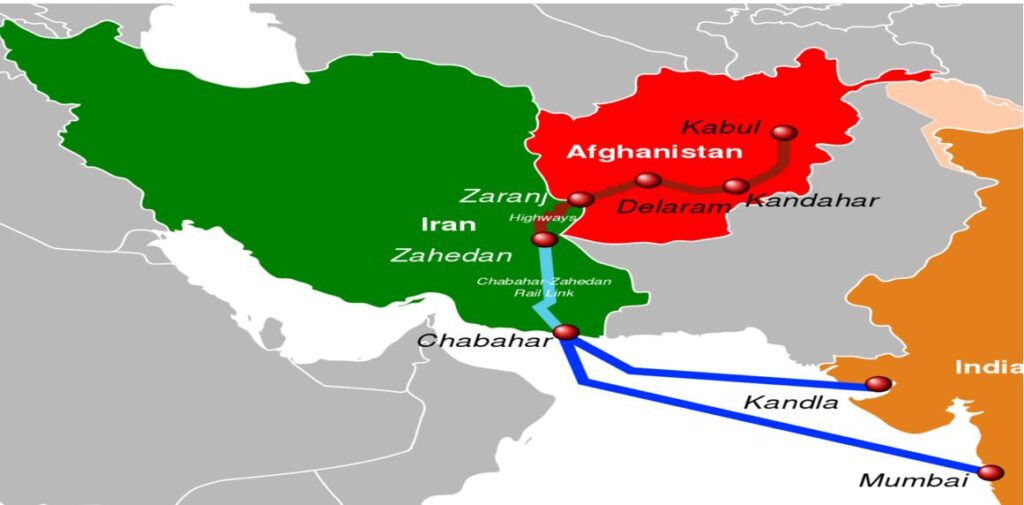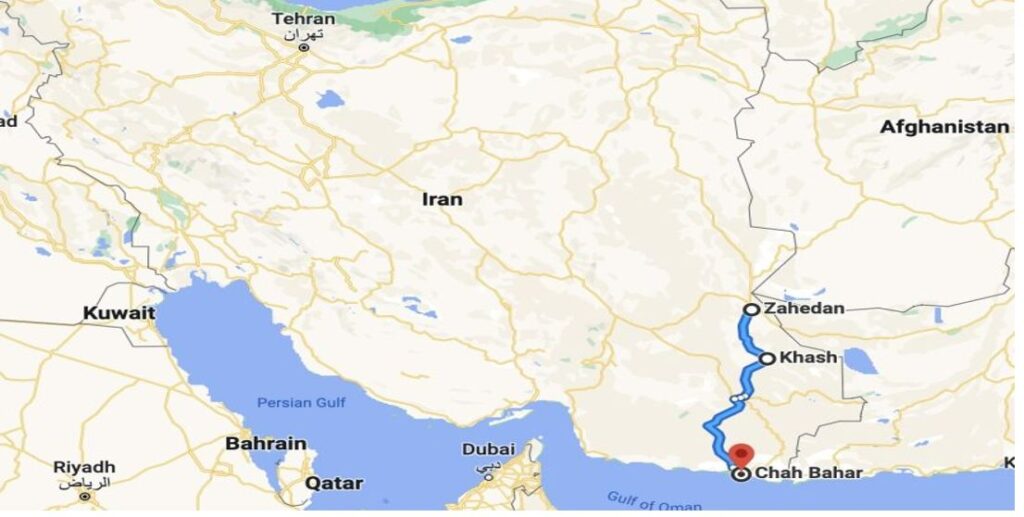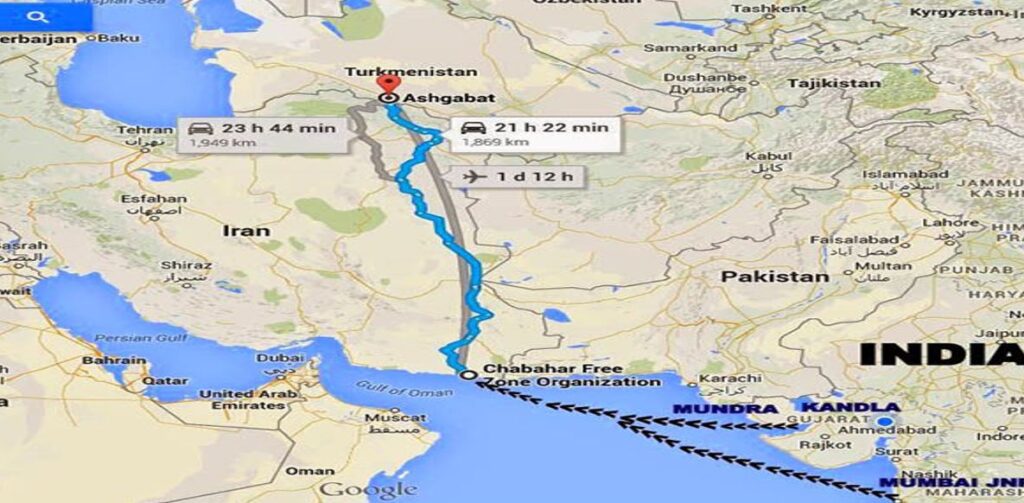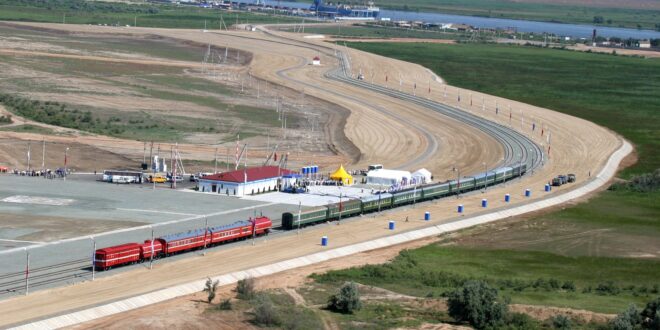The Chabahar Port Transit Project, is of great importance in the “International North–South Transport Corridor” (INSTC), because it is the only Iranian port with direct access to the Indian Ocean., writes Valdai Club expert Vali Kaleji.
In his article, Dr. Vali Kaleji, a Tehran-based expert on Central Asia and Caucasian Studies, postulates that three main routes of the International North–South Transport Corridor (INSTC) has been developed including Western route (Russia- Azerbaijan- Iran- India), Middle or Trans-Caspian route (Russia-Iran-India) and Eastern route (Russia- Central Asia-Iran-India). In the Eastern route of the INSTC, the Chabahar port in the extreme southeast of Iran in Sistan and Baluchistan province is of great importance, because it is the only Iranian port with direct access to the Indian Ocean because it reduces the cost of transporting goods from India to Russia by one fifth and is the shortest and least expensive transit route is on the eastern wing of the INSTC. Furthermore, In the framework of the tripartite transit agreement between Iran, India and Afghanistan, which was signed on May 24, 2016, the successful efforts of the Indian lobby have exempted the Chabahar transit project from the unilateral US sanctions that is a breathing and vital space for Iran and also Russia, as two countries under embargoed economy and trade. On the other hand, Iran is dissatisfied with India’s performance in fulfilling its obligations in the development of Chabahar port and also the Chabahar-Zahedan railway route and therefore, Iran is interested in the investment of Russian and Chinese companies in the development of both ports of Shahid Beheshti and Shahid Kalantari in the Chabahar Free Trade–Industrial Zone (CFZ).
For the first time, Russia, Iran and India signed the agreement for the International North–South Transport Corridor (INSTC) project on 16 May 2002. This transit project is a multi-mode network of ship, rail, and road route for moving freight between three countries which has been developed in three main routes during the last two decades: “Middle or Trans-Caspian (through Astrakhan, Olya, and Makhachkala ports), Eastern (direct railway communication through Kazakhstan, Uzbekistan, and Turkmenistan to Iranian railway network), and Western (Astrakhan-Makhachkala-Samur, subsequently through Azerbaijan territory, to the planned bordering Astara station)”.
Among three aforementioned routes, the eastern route of the INSTC is very important because it connects the eastern part and central regions of Russia through Kazakhstan and Turkmenistan to the southern ports of Iran and also India and Arab countries on the southern edge of the Persian Gulf. “The eastern branch of the INSTC was officially launched with the first train making the journey in July 2022. After crossing the border at Sarakhs (in border of Iran and Turkmenistan), the journey continues across Iran to Bandar Abbas, the port in the south of Iran from where vessels take the cargo to India. Therefore, the eastern branch of the INSTC is a fact. Six trains are currently route overland, from Russia to India via Turkmenistan and Iran. These trains indicate the increased interest in transport by rail from Russia to India, as multiple routes are unfolding on the corridor.”
But if we pay attention to the map of Iran, Chabahar port in the extreme southeast of Iran in Sistan and Baluchistan province compared to Bandar Abbas in Hormozgan province and the Strait of Hormuz has a closer access in the eastern wing of the INSTC for Russia and Central Asia to reach Iran and India provides. But regarding Chabahar port, its transit and commercial capacities and Russia’s investment in this transit project, the following points and considerations are worthy of attention.
- The Chabahar port is the only Iranian port with direct access to the Indian Ocean and it has been dubbed the “Golden Gate” to Afghanistan and Central Asia. Indeed, the Chabahar port is Iran’s first “deep-water port”. In the recent decade, Iran has persuaded development of the Chabahar port in framework of “Special Plan for Development of Makran Region” that was approved on December 26, 2016. The plan has three long-term horizons: 2020, 2030, and 2040. In this framework, Iran has invested heavily in developing Makran beaches and Chabahar port, a combination of economic, social, and military-security programs. Iran’s efforts to implement the Chabahar port transit project seem to be part of the country’s long-term goal of becoming a regional transit hub.
- The role and place of Chabahar port increased when India, Iran, and Afghanistan on May 24, 2016 signed a historic trilateral agreement in Tehran to develop the strategic Iranian port of Chabahar as a key node in a “Transit and Transport Corridor” through Afghanistan” that recently Uzbekistan, as the only doubled locked Country in Central Asia” joined it. “After the Iran-India-Afghanistan tripartite transit agreement, the transit capacity of Chabahar port has increased from 2/5 million tons to 8 million tons per year. In the second stage of development, the capacity of Chabahar port will increase to 33 million tons. According to the Financial Tribune, an Iranian English economic daily, on August 8, 2022, the Chabahar Port handled 1.55 million tons of goods in the first four months of the 2022-23 Iranian fiscal year, from March 21 to July 22. This represents a 33.8% increase compared to the same period last year. During this time period, Chabahar port imported more than 580,000 tons of sugar, rice, wheat, and animal feed, an increase of 7.7% from the previous year”. Although there was a short break in this agreement after the Taliban came to power in Afghanistan in August 2021, But gradually this challenge was solved and the Islamic Emirate is trying to increase its domestic and international political legitimacy and Afghanistan’s economic situation through economic and transit projects such as the Chabahar transit project. The “Chabahar Transit Project” route is depicted on the map below.

- Although the Donald Trump administration unilaterally withdrew the United States from the Iran nuclear deal (JCPOA) on May 18, 2018, shortly after the implementation of the Indian-Iranian-Afghan agreement, however the successful efforts of the Indian lobby to exempt the Chabahar transit project from the unilateral US sanctions and Trump administration’s “maximum pressure policy” (2018–2020) against Tehran. In fact, India looks at the Chabahar transit project as a part of the “Diamond Necklace Strategy” against China’s “String of Pearls” Strategy and also bypassing the traditional rival, Pakistan, especially to counter China’s massive investment in the development of Pakistan’s Gwadar port, as well as the China-Pakistan Economic Corridor (CPEC). The exemption of the Chabahar transit project from the unilateral US sanctions has continued in the administration of Joe Biden that is a breathing and vital space for Iran and also Russia, as two countries under embargoed economy and trade.
- Non-completion of the Iranian eastern railway is an important constraint in the process of the fast, easy, and high volume of goods and containers. These conditions have caused rail transit to be carried out on the eastern route of the INSTC from Russia and Central Asia to Bandar Abbas in the Strait of Hormuz, which is connected to the national railway of Iran. While Bandar Abbas is 680 km away from Chabahar port, and if rail access to Chabahar port is provided, transit from India to Afghanistan, Central Asia, and Eastern regions of Russia will be done from a shorter distance, at a lower cost, and at a faster speed. To overcome this challenge, Iran is building the 628-kilometer railway project, which is aimed to connect Chabahar port to Zahedan (the capital city of southeastern Sistan-Baluchestan Province). Iran hopes it can be completed by the end of the calendar year 1402 (March 20, 2024). The Location map of the Chabahar port is depicted on the map below.

(the capital city of southeastern Sistan-Baluchestan Province)
In fact, the 628-kilometer railway project between Chabahar port to Zahedan is part of Iran’s big project for the construction and development of the railway in the east of the country. The 1350- km “Chabahar-Zahedan-Mashhad-Sarkhs” railway axis connects the extreme southeast of Iran to the northeast of the country on the border with Turkmenistan. This railway route has a capacity of 8.5 million tons of cargo per year, and only 10% of the capacity of this railway route is intended for passenger transportation. This shows that Iran pays serious attention to this railway route for the north-south corridor from Chabahar port to Central Asia and also to the eastern part of Russia. The Chabahar-Zahedan-Mashhad-Sarkhs railway axis’s location map is depicted on the map below.

railway axis in the eastern of Iran (Source: Tehran Times)
However, the main problem of this railway project is the financial issues. Non-fulfillment of financial commitments by India has exacerbated these problems. While in the absence of foreign investors and contractors, “Khatam al-Anbya Construction Headquarters” of the Islamic Revolutionary Guard Corps (IRGC) is responsible for the implementation of this railway project, Iran launched a 154-km railway from Zahedan-Kash, as the first section of Chabahar- Zahedan railway, on November 10, 2022. Although Iran hopes to complete this railway project by September 2024, the mountainous part of the route and the financial restrictions of the Iranian government pose serious challenges in the complete realization of the 624 km Chabahar-Zahedan railway route.
- Iran is dissatisfied with India’s performance in fulfilling its obligations in the development of Chabahar port and also the Chabahar-Zahedan railway route. In this regard, Mohammad Monsan, a member of the regional development and sea-oriented group of the Iran Expediency Council, says in a critical approach, “the Indian ambassador in Tehran has recently announced that we want to spend 85 million dollars in Chabahar, of which we have spent 20 million dollars so far! While the Chinese had announced that they would invest 46 billion dollars in Pakistan’s Gwadar, which they later increased to 54 billion dollars. This amount of investment is the largest amount of foreign investment in Pakistan since the country’s independence, which is estimated to create 2 million jobs between 2015 and 2030 and increase Pakistan’s economic growth by two and a half percent annually”. To overcome this challenge, Iran is trying to attract new investors, especially China. It seems that Tehran hopes that with China’s participation and investment, it will be able to define the Chabahar port transit project as part of the One Belt One project, and on the other hand, with the entry of India’s traditional competitor, it can lead this country to more dynamism and investment in this transit plan.
- The conflict in Ukraine, the extensive western sanctions against Russia, Russia’s transit restrictions to Eastern Europe, and increasing trade and transit between Russian and India, has caused attention to be more serious than in the past to the INSTC by Moscow. In such a situation, parallel to the significant increase in the volume of trade and transit in the western and middle (trans Caspian) routes of the INSTC, the eastern branch of the INSTC was officially launched with the first train making the journey in July 2022 and “in December 2022, Russian Railways (RZD), together with the railways of Kazakhstan, Turkmenistan and Iran, has decided to grant reduced container-kilometer rates in 2023 for using the infrastructure of the eastern route of the North-South international transport corridor. It was reported that RZD would introduce a 20% discount in 2023 for export-import container shipments through border crossings between Russia and Kazakhstan. The discount will be in effect for all of next year on the condition that the freight also proceeds across the Bolashak-Serhetyaka crossing between Kazakhstan and Turkmenistan”. If the Iranian eastern railway route from Sarkhs to Zahedan and Chabahar is completed faster, new transit discounts for container-kilometer rates on the Eastern Caspian railway route can significantly increase the volume of transit on the eastern wing of the corridor through Chabahar port.
- On June 19, 2019, a tripartite agreement was signed between the Lotus SEZ, Anzali Free Zone Organization in the Caspian Sea and Chabahar Free Trade–Industrial Zone in the Gulf of Oman that has very important role in “multimodal route” in framework of the INSTC. But after the Ukraine conflict and Russia’s economic and transit restrictions, Moscow has paid more attention to Chabahar port, because Chabahar Port reduces the cost of transporting goods from India to Russia by one fifth and is the shortest and least expensive transit route is on the eastern wing of the INSTC. In this Director of Russia’s Astrakhan Special Economic Zone Sergei Miloshkin and Deputy of the State Duma Oleg Savchenko visited Chabahar port on November 13, 2022. It seems that due to Iran’s dissatisfaction with the process of India’s participation and investment in Chabahar port, there are suitable fields and opportunities for Russian investment alongside China. “Aiming to provide more new markets for Chabahar, Iran has offered several commercial incentives in the areas in the vicinity of Chabahar in an aim to attract foreign investments; in this line, Free Trade–Industrial Zone (FTZ) has been established. The Chabahar FTZ is divided into nine functional zones, with 26% of the territory being allocated to the trade and service sector, 49% to industry, and 25% to tourism and residential purposes”. Therefore, there are many areas for participation and investment of Russian companies in both ports of Shahid Beheshti and Shahid Kalantari in the Chabahar FTZ. In addition, Russia can also participate in the construction and completion of the Chabahar-Zahedan-Sarkhes railway line, just as it participated in the construction of the 164 km Rasht-Astara railway.There is no doubt that the implementation of the Eastern Iran railway project can significantly increase the volume of trade and transit between Russia, Iran and India in the eastern wing of the INSTC.
 Eurasia Press & News
Eurasia Press & News




